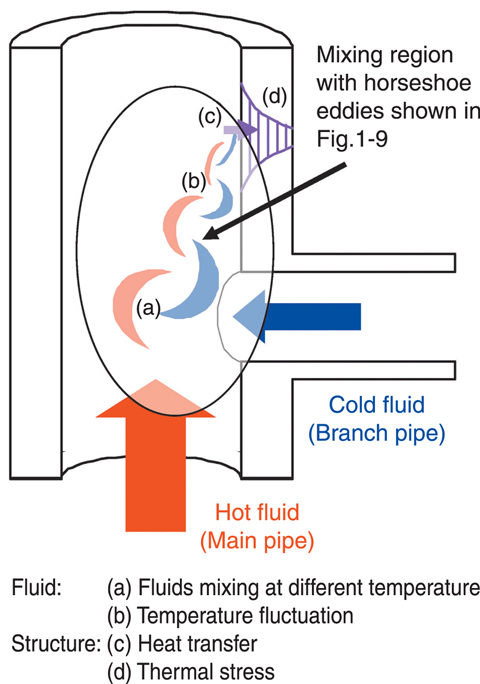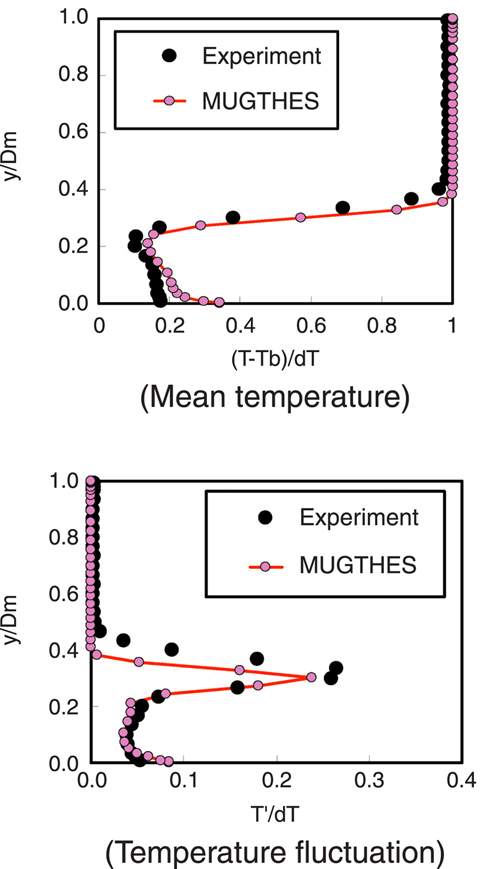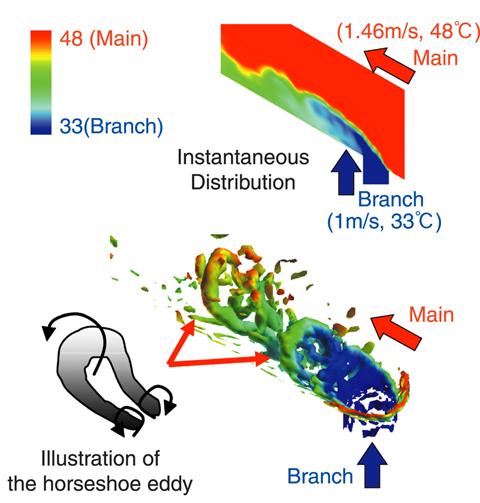
Fig.1-7 Thermal striping in a T-junction piping system

Fig.1-8 Radial profiles of fluid temperature

Fig.1-9 Horseshoe eddies showing Iso-Surfaces of rotating flow strength
Fig.1-7 illustrates the thermal striping phenomenon in a T-junction piping system (T-pipe) where cold fluid through the branch pipe mixes with hot fluid in the main pipe (a). If the temperature fluctuation caused by the mixing (b) is transmitted to structure surface (c), high cycle thermal stress may be induced on the surface (d) and may cause crack initiation and propagation according to the frequency and the amplitude of the temperature fluctuation. Therefore, thermal striping is recognized as an important issue in plant safety because of its threat to structural integrity.
We have developed the numerical simulation program "MUGTHES" in order to clarify the nature of thermal striping and to establish an estimation method for high cycle thermal fatigue in structure. MUGTHES is designed to calculate thermal interaction between unsteady thermal- hydraulic phenomena and unsteady heat conduction in a structure, utilizing a conjugate heat transfer model. The Boundary Fitted Coordinate (BFC) system and the Large Eddy Simulation (LES) approach are employed to simulate complicated geometry and turbulent flow phenomena, respectively. To improve the computation efficiency, a new matrix solver for pressure equations is established and parallel computation technique is used.
Numerical simulation of thermal striping in T-pipe was carried out to confirm the applicability of MUGTHES and to determine the mixing mechanism in T-pipe. From Fig.1-8, it was confirmed that the numerical results could reproduce experimental results well in fluid temperature profiles. Moreover, the contribution of horseshoe eddies generated in the mixing region to temperature fluctuation generation in T-pipe could be predicted as shown in Fig.1-9.
Numerical simulations of thermal interaction experiments are expected to validate the physical models in MUGTHES. Through this V&V (Verification and Validation) process, MUGTHES will be applied to the thermal striping in upper plenum of JSFR (Japan Sodium-cooled Fast Reactor).